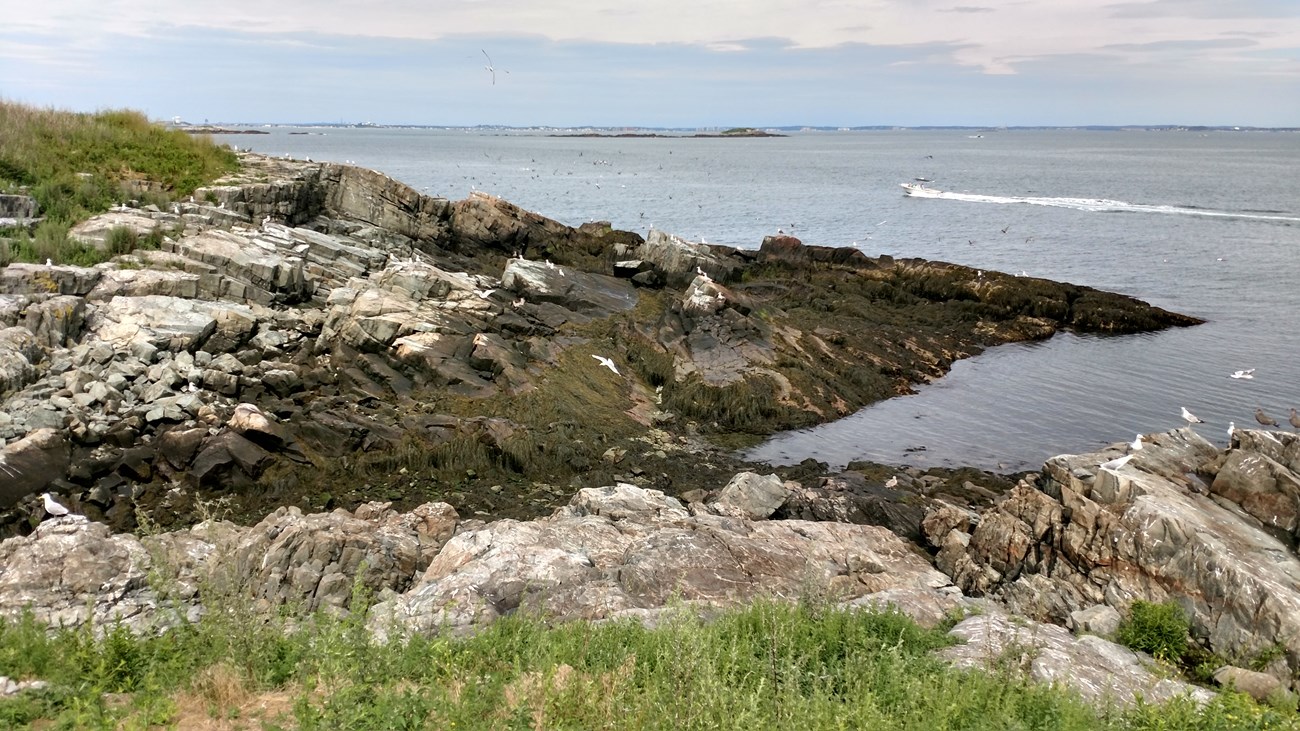
NPS Photo/ R. Vincent This bedrock island supports the most diverse assemblage of breeding waterbirds in Boston Harbor. Outer Brewster Island has mostly rocky landscaping with remnants of a few coastal defenses. This island is a popular site for bird-watching. General InformationThis island of Boston Harbor Islands National and State Park is managed by Massachusetts Department of Conservation and Recreation (DCR). Visitor Facilities & Services
Short HistoryThe relative barrenness and rocky shoreline of Outer Brewster, also known as "Outward Island," precluded human use other than as a granite quarry in the 1800s or a site for coastal defense in the 1900s. Battery Jewell was constructed during World War II. The battery consisted of two 6-inch radar-controlled guns and housed 125 men in three concrete barracks. Natural History OverviewVegetationLow shrub thickets and rough fields cover Outer Brewster's rocky uplands. Staghorn sumac dominates the island's shrub communities, and saltspray rose is common in low, rocky areas near the shoreline. The only trees are a small stand of quaking aspen, and one individual each of apple, black cherry, and Siberian elm. One plant found on Outer Brewster, and not found elsewhere in the park, is slender-leaved goldenrod. WildlifeNot surprisingly, the outer islands have more of the types of intertidal plants and animals typically found on exposed rocky habitats. Outer Brewster provides the highest percentage of rocky intertidal substrate of any island in the park. Outer Brewster provides nesting habitat for abundant coastal water birds such as cormorants, wading birds, waterfowl, shorebirds, and gulls. Common Eider ducks nest in surprising abundance on the outer islands, including Outer Brewster, at the southern end of their range in the Western Atlantic. In addition to Eiders, uncommon nesting birds include Glossy Ibis which are found in the park only on Outer Brewster and adjacent Calf Island (2001–2003). The Brewsters support a breeding population of American Oyster catchers, designated as a Partners in Flight species with high continental priority. Concentrations of harbor seals haul out on the Brewsters. Surveys of other mammals and terrestrial fauna are in progress for the island. Please see Animals page for more information. GeologyThe island consists of exposed bedrock covered by fertile soil and is bounded by a rocky shore with steep cliffs. A rock formation by the western cove is referred to as "Pulpit Rock." On the northeast and southeast sides of the island, there is evidence of 1800s quarrying and a small "canal." Water FeaturesA "fine spring of fresh water" and a small pond are described by Sweetser in 1882. A 16-foot well used by lobster fisherman DeGaust in the early 1900s is described by Snow in the 1930s. Views and VistasDowntown Boston, Hull, Boston Light, The Graves Light, and the Brewster Islands group comprise the views from Outer Brewster. Structures
|
Last updated: November 30, 2023
